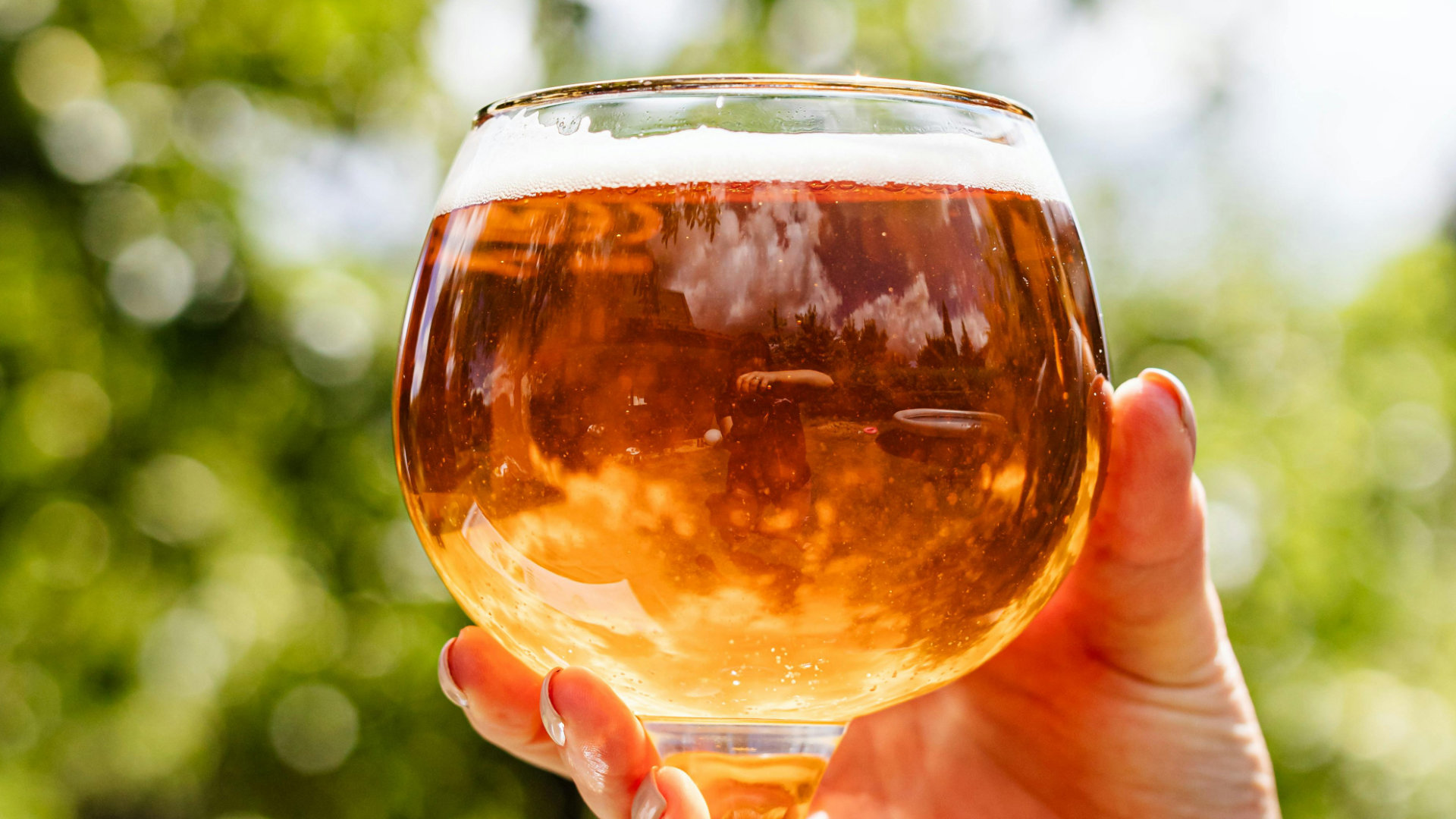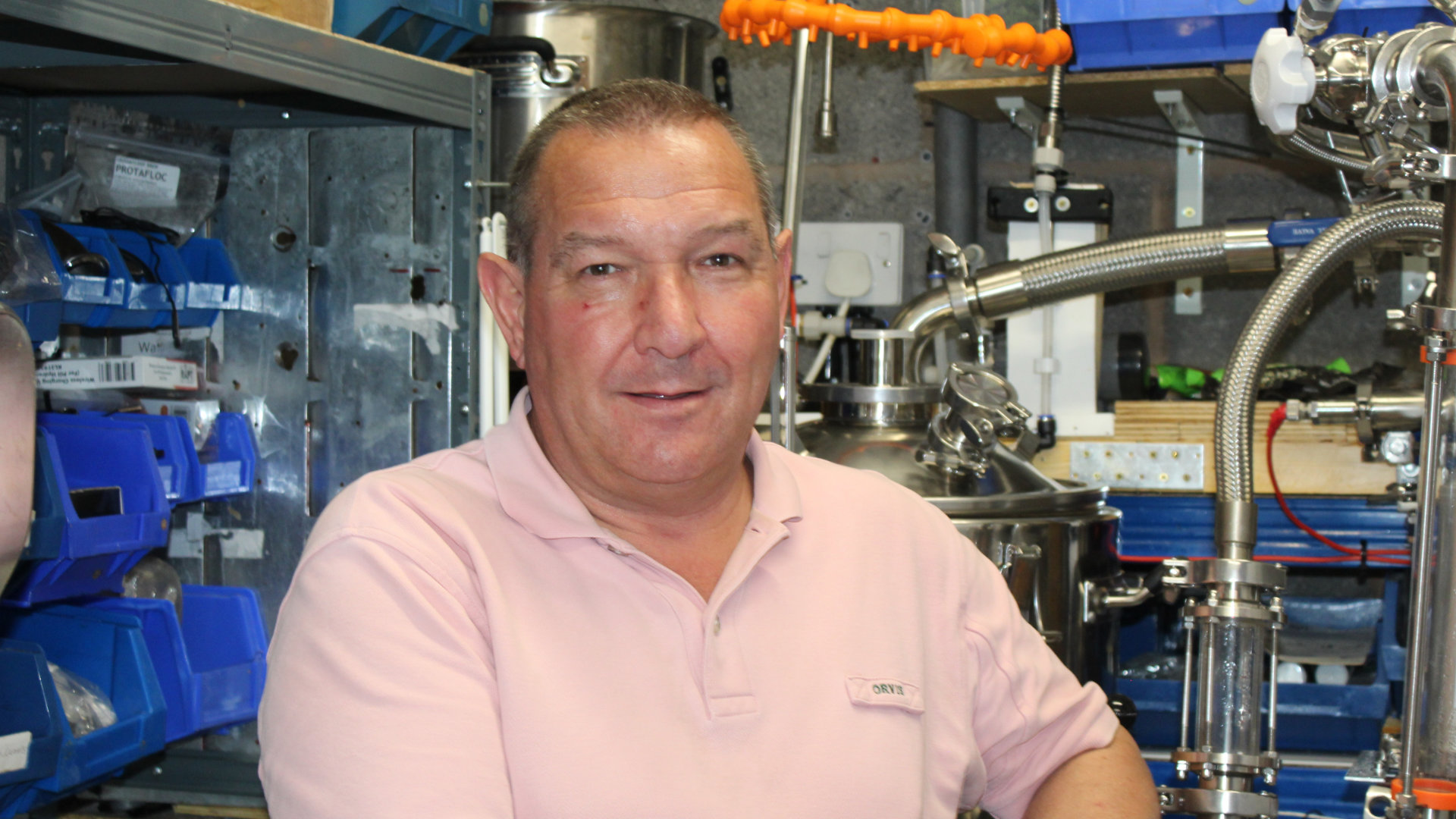What is it that attracts us to trying a beer? The brewery’s reputation for consistently delivering a quality brew obviously holds great clout, but if you’re like me you are also excited about people doing things a little bit differently. Brass Castle in Molton, North Yorkshire, are known for their epic beers, but their Head Brewer possesses a passion for fermentation which has paved the way for some exceptional mixed ferm sours. I contacted him to discover more.Â
Yohanna Best: How did you get into brewing?
Sam Teale: I’ve been cooking and fermenting foods and wines for a long time, so always had a pretty good understanding of fermentation, the importance of hygiene and providing the right environment for specific microbes, but had never brewed a beer or done anything commercially before joining Brass Castle. After building a pub for an arts collective in Leeds Phil, the founder of Brass Castle, caught wind and asked if I would like to fit out their tap house and I jumped at the chance to get involved with my favourite brewery (not kidding, Brass Castle have been my favourite since I started drinking). Nearing completion of the project Phil approached me with the offer to stay on with them and lend a hand in the brewhouse. I couldn’t really say no, and found the brewing process easy to pick up with my previous experience. I’ve been brewing now for 7 years and am still picking things up to improve my skills and methods.
“A live ferment from something like this contains hundreds of different yeasts and bacteria, all of which will contribute something unique to the character of the beerâ€
YB: I tried your Lemon Peel Miso Gose at our local craft beer bar, Bottle & Barrel in Aberystwyth, and absolutely loved it! Is the miso one you have made?Â
ST: As already mentioned I’ve been fermenting food for a long time and I struggle to think of anything I haven’t at some point had bubbling away on my shelves at home (much to my wife’s dismay). So, yes, we did make the miso ourselves. This was quite important for this particular use as we needed a live ferment - the miso was not just for flavouring but used as the souring aid for the kettle sour. This was particularly cool, as rather than using a dried packaged starter, which usually consists of only one microbe (typically some strain of Lactobacillus), a live ferment from something like this contains hundreds of different yeasts and bacteria, all of which will contribute something unique to the character of the beer. This results in a much more complex flavour from a convenient kettle sour and, in this case, a beer that’s literally been three years in the making! We first trialled this with Pickleback, a dill pickle gose using a huge batch of wild fermented deli style pickles to sour the wort. Coming up this year we’ll be releasing a sour using kimchi as a souring agent (again a couple of years in the making, as we make our own gochujang to use in the kimchi) and Jitterbug, a sour started with a ginger bug, a traditional wild starter for ginger beer.
“Switching from open top FV’s to DPV’s has meant a necessary shift from top cropping to bottom cropping.â€
YB: We would love to hear about your house yeast. What strain is it? How do you use and maintain it?
ST: We have a traditional yeast which has been fermenting beer in Yorkshire since at least the 1700’s, it’s highly flocculating which allows us to keep our beers vegan by avoiding isinglass finings. Since our refurb last year we’re currently relearning how to care for our yeast ourselves. Switching from open top FV’s to DPV’s has meant a necessary shift from top cropping to bottom cropping, which can have many effects on the yeast’s behaviour over time, so we’re currently learning our way through that. Our new routine sees us cropping our yeast from the bottom of the FV at the end of fermentation, just as the yeast starts to flocculate and settle without letting is sit in the cone too long, as this can stress the yeast. We crop into Cornelius kegs, which are great for storing the yeast in a sterile environment.
YB: What’s the weirdest thing that has happened while brewing one of your beers?
ST: I don’t know if it’s weird exactly, but we have been sent the wrong strain of wet yeast in the past, which only became obvious during fermentation. It lead to a really interesting take on a beer we were not intending, and we ended up with Peach Melbeer, a Peach Melba pale ale. The Belgian notes of the strain really complimented the flavours we’d already imparted to the beer, and we felt it came out better than what we had originally intended. We’re actually looking to brew it again this year and will be using the ‘wrong strain’ again.
YB: Which of your beers have you been most proud of and why?
ST: There are a few beers I’m particularly proud of, from my first ever recipe (Supersoaker), my first ever label design (Crush series), my face on the label (Yes Pecan), receiving compliments from some of the brewery staff for our homage to the world renowned Pliny The Younger (Lupulin Threshold shift), but I think if I had to pick one it would be Pickleback and the first idea of combining my previous passion of fermenting foods and utilising this to start off a sour beer.
YB: Do you predict any changes to the UK craft beer industry in the next few years?
ST: The craft beer industry is tough at the moment and has been for a good while. Unfortunately, we are seeing breweries shut down across the country, and it’s hard to say I can see this changing. Interest in craft beer, however, seems to be as strong as ever, so I imagine although we’ll lose a few more craft breweries, we’ll be left with some tried and tested breweries producing brilliant beer reliably for people to enjoy. I can also see the enjoyment of alternative drinks coming to the fore, low and no alcohol being an obvious at the moment, but also alternative ferments like kombucha, kefir, ginger beer, tepache and the like, which we’ve had a play with in our taphouse, all of which bring their own difficulties in a commercial set up, but something we’re looking to explore more in the future.
YB: What’s your top tip for brewing a DDH beer?
ST: A few points on this, make sure you use the right yeast, one that’s going to produce plenty of its own fruity esters, raising the temp slightly after day three of fermentation can help with this. The best DDHs aren’t just relying on hops for flavour, but should be complementing the yeast, also one that will react well with hopping during fermentation (biotransformation). But mostly, keep oxygen away from this brew!
YB: Anything you would like us to promote for you?Â
ST: The new beers I’ve mentioned above, particularly the mixed ferm sours. Our tap house in front of the brewery in Malton is a great way to try our beer at it’s best. We’re also slowly rolling out our flagship beer Bad Kitty on nitro, which I’m over the moon with, it comes out so beautifully smooth and creamy. I really didn’t think you could beat Kitty on cask, but it turns out you can! It’s also worth mentioning that all our beers always have been and always will be totally vegan, and within the last 5 years or so have also been brewed to a gluten free recipe. This doesn’t subtract in anyway from the flavour of beer and just means that everyone can drink them!











